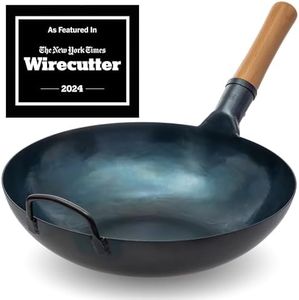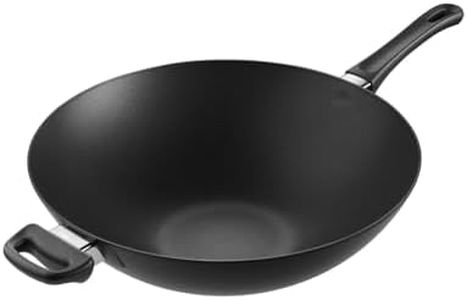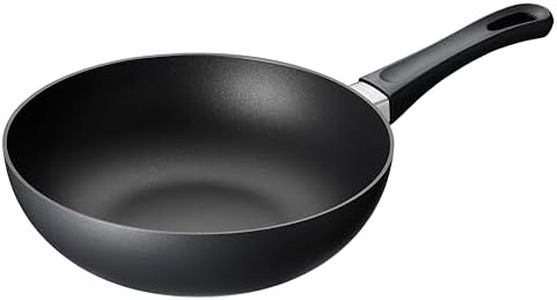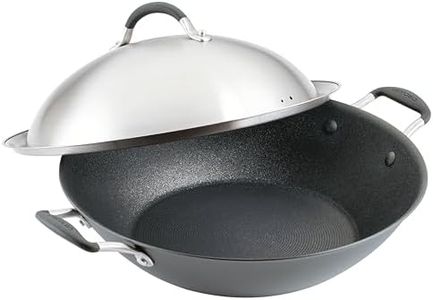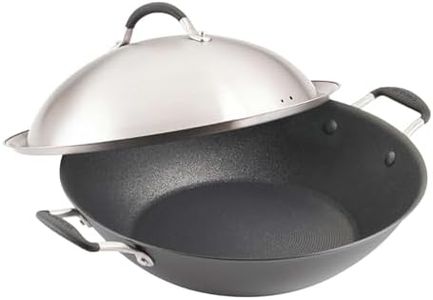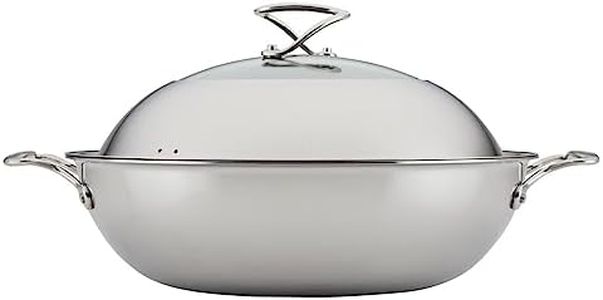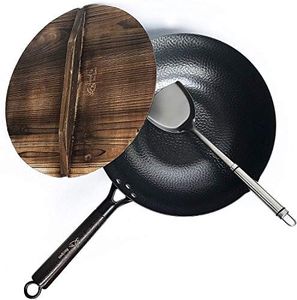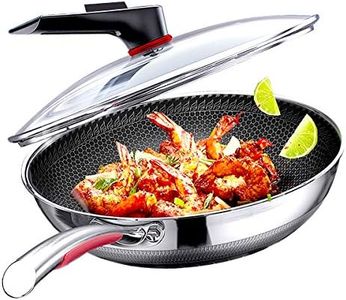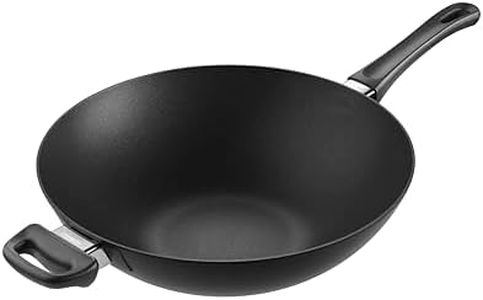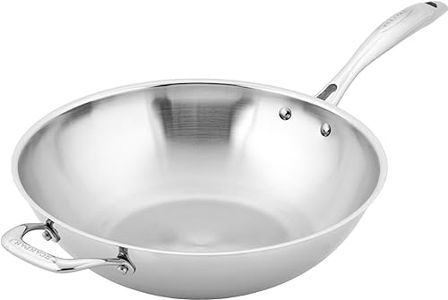We Use CookiesWe use cookies to enhance the security, performance,
functionality and for analytical and promotional activities. By continuing to browse this site you
are agreeing to our privacy policy
10 Best Wok For Induction
From leading brands and best sellers available on the web.Buying Guide for the Best Wok For Induction
Choosing a wok for induction cooking requires understanding a few important details to make sure it works properly with your stovetop while still matching your cooking needs. Induction cooktops use magnetic energy to heat cookware, so not every wok will be compatible. It's important to pay attention to certain specifications to make sure your wok heats efficiently and gives you the results you want for stir-frying, steaming, searing, and more. By learning about these key specs, you'll find it much easier to select a wok that fits right into your kitchen and cooking habits.MaterialThe material of the wok is essential because only certain metals work with induction cooktops. Look for magnetic materials like cast iron, carbon steel, or stainless steel with a magnetic base. Aluminum or copper alone won't work unless combined with a magnetic layer. Heavier materials like cast iron hold heat well but are weightier, while carbon steel is lighter and heats quickly. If you often cook quick stir-fries, carbon steel is ideal, but for even heat retention on low and slow dishes, cast iron or thick multi-layer stainless steel could suit you best.
Base FlatnessFlatness of the base is important because induction cooktops require maximum contact with the cookware's base to work efficiently. Traditional woks have round bottoms, but for induction, you need a flat-bottom wok. A completely flat base ensures the wok stays stable, heats evenly, and doesn't wobble. If you want the most authentic stir-fry experience, look for a wok with gently curved sides but a wide, flat bottom to bridge the gap between authenticity and practicality on induction.
SizeSize refers to the diameter of the wok, usually measured in inches or centimeters. Woks can range from small (under 10 inches) to large (over 14 inches). If you're cooking for one or two people or have limited cooktop space, a smaller wok is easier to manage and store. If you often cook for a family or enjoy making large portions, a bigger wok lets you toss and stir food easily without overcrowding. Choose a size that matches both the number of people you usually cook for and the size of your induction burner.
Handle TypeHandles affect how you hold, move, and control the wok during cooking. Some woks have two short loop handles, while others have one long handle and a small helper handle. For induction use, check that the handles are securely attached and made from materials that stay cool or are easy to grip. If you plan to toss food a lot or need to move the wok with one hand, a long handle is more practical. For heavy woks or oven use, two handles might be more comfortable.
Compatibility MarkingsCompatibility markings on the packaging or bottom of the wok indicate if it can be used on induction cooktops. Look for an induction symbol or a note that says 'induction compatible.' This spec is important because it gives you reassurance that the wok will work as intended. If you're shopping in a store, take a small magnet with you—if it sticks to the bottom of the wok, it's a good sign that it's induction-ready.
Coating/FinishWoks come with different coatings, such as nonstick or uncoated. Nonstick coatings make cleaning easier and require less oil, which is great for low-fat cooking but may limit high-heat searing and are more delicate. Uncoated carbon steel woks develop a natural nonstick patina with seasoning, ideal for traditional stir-frying. Choose nonstick if convenience and easy cleanup are your top priorities, or opt for uncoated if you want authentic flavor and don't mind caring for your wok through regular seasoning.
